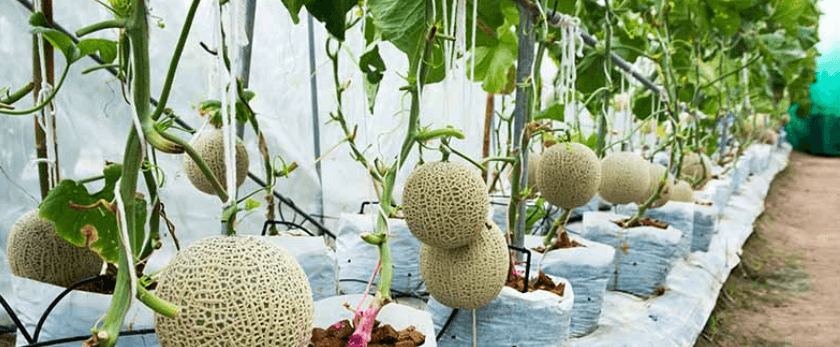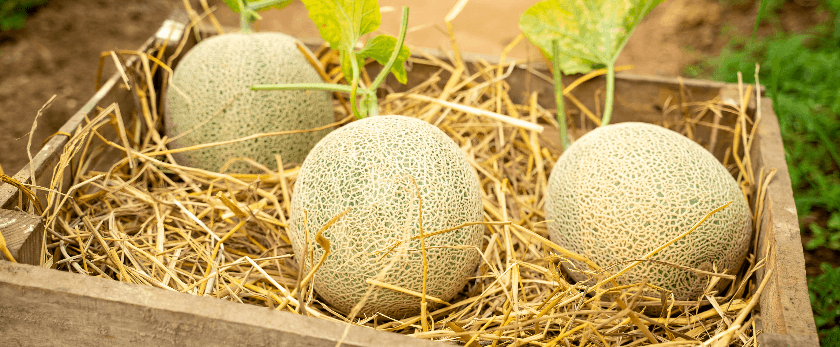Cantaloupes, also known as muskmelons, are a delicious and nutritious fruit that can be easily grown in your own backyard. Not only are they a tasty addition to your summer meals, but they also provide numerous health benefits, including being a good source of vitamins A and C, as well as potassium and fiber.
If you're interested in growing your own cantaloupes, here's a guide to help you get started.
Choosing the Right Variety
Before you start planting, it's important to choose the right variety of cantaloupe for your climate and growing conditions. Some popular varieties include Athena, Ambrosia, and Hale's Best. Make sure to do some research and choose a variety that is suitable for your region.
Planting
Cantaloupes are warm-weather plants and should be planted after the last frost has passed. They require plenty of sunlight, so choose a spot in your garden that receives at least 6-8 hours of direct sunlight per day.
To plant cantaloupes, prepare the soil by adding compost or well-rotted manure to improve its fertility. Cantaloupes prefer well-drained soil, so make sure the soil is not too compacted. You can also plant cantaloupes in raised beds or containers if you don't have a suitable garden space.
Plant the seeds about 1 inch deep and 2-3 feet apart. If you're planting multiple rows, make sure to leave at least 3-4 feet between rows to allow for proper growth and air circulation.
Watering
Cantaloupes require consistent watering to thrive. Keep the soil evenly moist, but not waterlogged. Overwatering can lead to root rot and other diseases. Water the plants deeply once or twice a week, depending on the weather and soil conditions.
It's best to water cantaloupes in the morning to allow the leaves to dry out during the day. Wet leaves can lead to fungal diseases. You can also use a drip irrigation system to ensure that the plants receive a consistent amount of water.
Light
As mentioned earlier, cantaloupes require plenty of sunlight to grow and produce fruit. Make sure to choose a sunny spot in your garden for planting. If you're growing cantaloupes in containers, make sure to place them in a location that receives adequate sunlight.
Soil
Cantaloupes prefer well-drained, fertile soil. They also require a pH level of 6.0-6.8. You can test your soil's pH level using a home testing kit or by sending a sample to a local agricultural extension office.
If your soil's pH level is too low, you can add lime to raise it. If it's too high, you can add sulfur to lower it. It's important to maintain the right pH level for optimal growth and fruit production.
Fertilizer
Cantaloupes are heavy feeders and require regular fertilization to produce a good harvest. Before planting, mix in a slow-release fertilizer into the soil. You can also use a liquid fertilizer every 2-3 weeks during the growing season.
Avoid using high-nitrogen fertilizers, as they can lead to excessive foliage growth and fewer fruits. Instead, choose a balanced fertilizer with equal amounts of nitrogen, phosphorus, and potassium.
Pruning
Pruning is an essential part of growing cantaloupes. It helps to improve air circulation, reduce the risk of diseases, and promote better fruit production. Prune the plants when they are about 1-2 feet tall by removing any side shoots or suckers that grow from the main stem.
You can also prune the plants to have a single main stem and two or three side branches. This will help the plant to focus its energy on producing fruits rather than foliage.
Harvesting
Cantaloupes are ready to be harvested when they are fully ripe. You can tell if a cantaloupe is ripe by its color, smell, and texture. The skin should have a golden or yellowish color, and it should have a sweet, musky smell. The stem should also easily detach from the fruit when it's ripe.
To harvest, cut the stem about an inch above the fruit using a sharp knife or scissors. Avoid pulling the fruit off the vine, as this can damage the plant.

Common Problems with Growing Cantaloupes
Like any plant, cantaloupes can face some challenges during their growth. Here are some common problems and how to address them:
- Pests: Cantaloupes can be susceptible to pests such as aphids, cucumber beetles, and squash bugs. You can use natural methods like handpicking or using insecticidal soap to control these pests.
- Diseases: Fungal diseases like powdery mildew and downy mildew can affect cantaloupes. Make sure to provide adequate air circulation and avoid overhead watering to prevent these diseases.
- Poor fruit set: If your cantaloupes are not producing fruits, it could be due to poor pollination. You can hand-pollinate the flowers using a small brush or plant flowers that attract pollinators to your garden.
- Blossom end rot: This is a common problem caused by a calcium deficiency in the soil. Make sure to maintain the right pH level and provide adequate calcium through fertilization to prevent this issue.
Conclusion
Growing cantaloupes can be a rewarding experience, and with the right care and attention, you can enjoy a bountiful harvest of delicious melons. Remember to choose the right variety, provide adequate sunlight, water and fertilize regularly, and prune the plants for optimal growth and fruit production.
By following these tips, you can grow your own cantaloupes and enjoy the satisfaction of eating fresh, homegrown fruits while also contributing to a more sustainable and eco-friendly lifestyle. Happy gardening!










